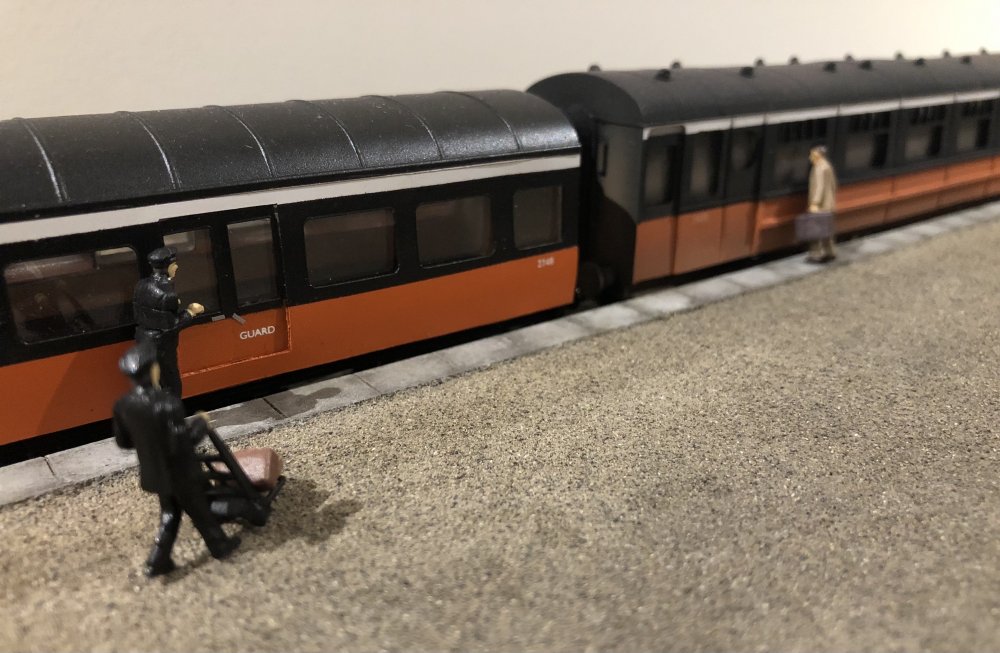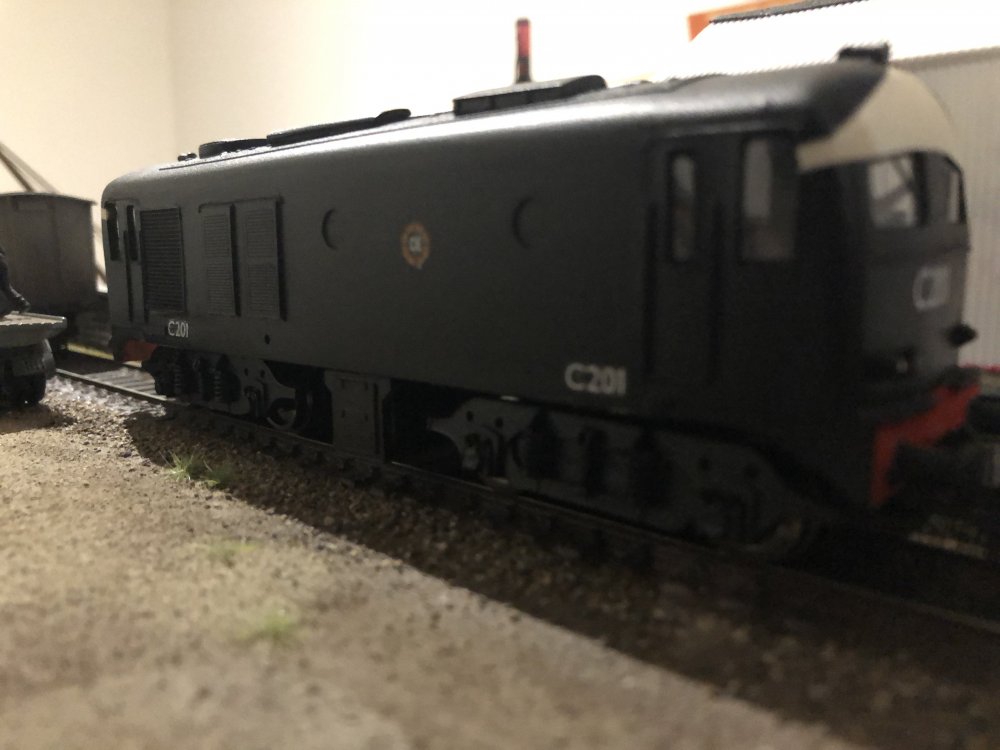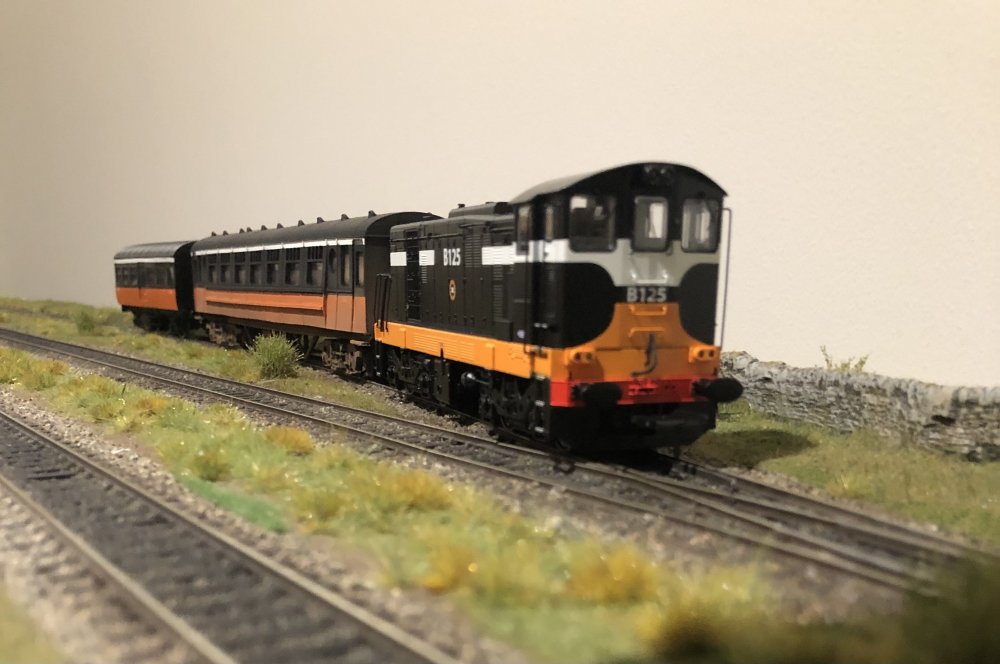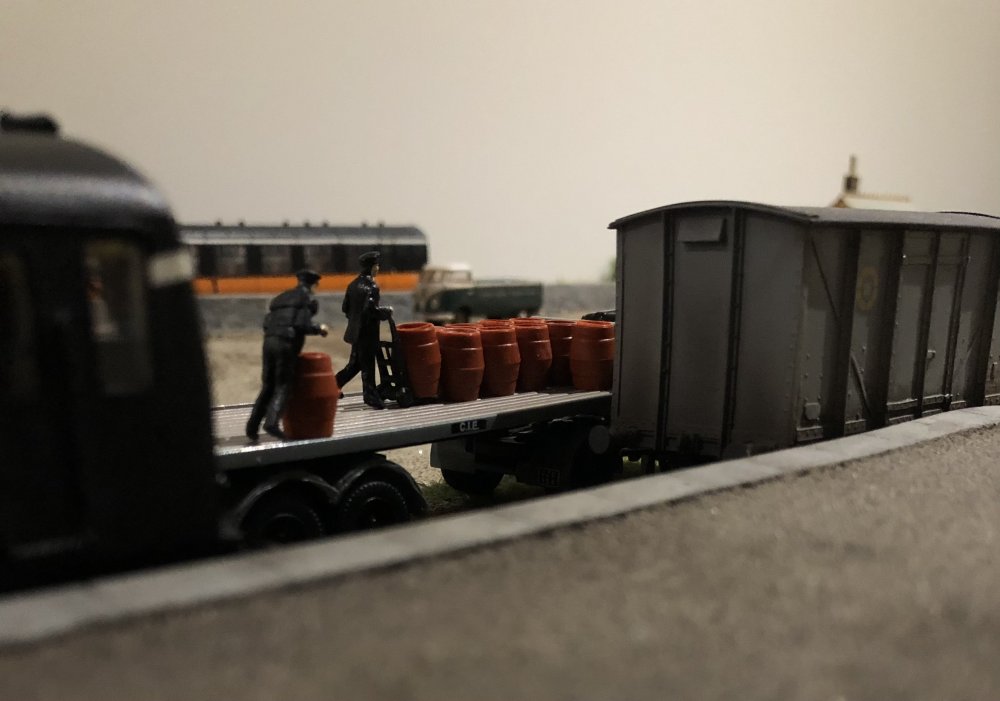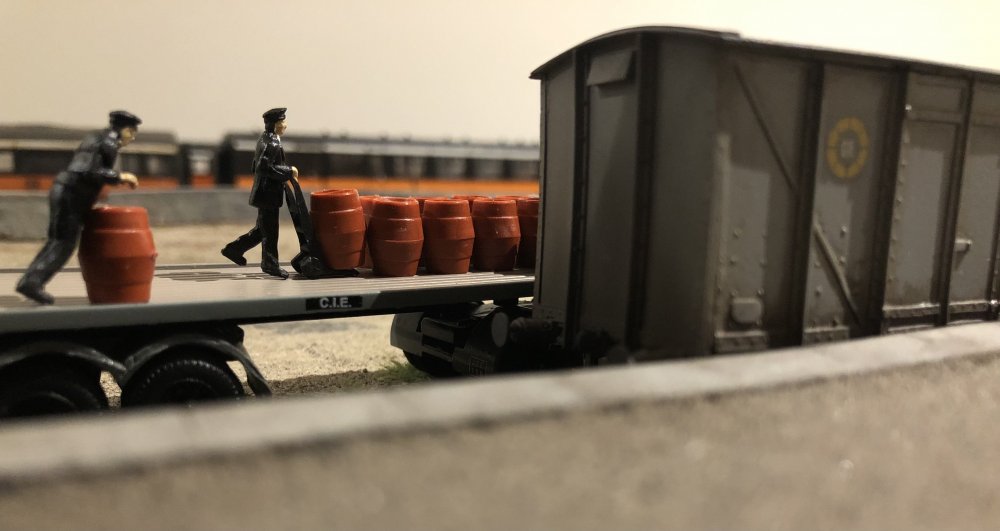-
Posts
15,915 -
Joined
-
Last visited
-
Days Won
394
Content Type
Profiles
Forums
Events
Gallery
Blogs
Community Map
Everything posted by jhb171achill
-
That will be a Wexford - Rosslare local, probably. The two carriages are green and the tin van filthy "silver", so it's 1958-62 or very close to that. You've a GSWR 1906-era third class coach and a comparatively modern (post-1956-ish) laminate. The loco is as grubby as one would expect..... The cars are (left) a comparatively new (1960?) Austin A35, and what I suspect may be a 1950/1/2 Ford Prefect (right, partly out of sight). A Ford "Thames" (or maybe VW?) van crosses the level crossing behind the train; with all these clues I'm going to say it's definitely 1961 or 1962.
-
When the Mk 3s were being introduced to traffic, I was in Inchicore one day (1986, I think?) but there were still a few of them not yet finished. While the bodies were in a light green undercoat, there were bogies about the place with all manner of colours on various components; they were in "factory" colour - whatever way they were when they came out of the Murphy Models packet. But those entering traffic had the bogies in black. Possibly a few escaped with replaced components which hadn't been painted the "livery" colour - this is almost certainly what's behind the current idea where increasingly bogies are not brown like the wagon they are under, but a mix of the colours of their components. Maybe some are even in Tyrone or Mayo colours today.......
-
I watched a radio once, but it didn't do anything.
-
I must fish out a report I have of an all-Ireland day in the LATE fifties. The amount of specials and what they consisted of is mind-boggling.
-
I’m sure Tara Junction is choked with specials from Westport, Ballina, Castlebar and Claremorris today!
-
I couldn’t be certain but it was well after the last of the fertiliser wagons. I guess about 20 years ago? Maybe a bit less?
-
I detest them. I also mute the sound the second they come on, and I make an absolute point of NOT EVER buying the product or service of the more annoying, longer or more repetitive ones. Current hates are anything to do with VHI or those beer ads with the creepy looking weird Dutch guy who ends every boring adventure by staring at you and saying "probably". Or maybe he's Danish. Who gives a toss.
-
Correct. NIR were at that a long time ago, but on IE it’s comparatively very much more recent. It was plain brown bogies on non-passenger stock, and plain black on carriages. The 2600-class had plain light grey bogies from Day 1, but that’s a separate story.
-
Very good job, that!
-
Wexford Model Railway Club Festival Open Day 2021
jhb171achill replied to Irishrailwayman's topic in What's On?
I've a dang good mind to set sail for Wexford that day. Is this place walkable from Wexford railway station or should I self-guide my own infernal combustion machine?- 98 replies
-
- model railway exhibition
- trade stands
- (and 3 more)
-
All the steam engines appear to be green NCC "Jeeps"! But - they have that certain atmosphere of old railway posters........
-
What's that yoke on the end of the train at Bray Head, I wonder? (Nice pics!)
-
Checked out the SE Finecast website - it's like something from 1988 with just lists - moving on! I think York Modelmakers have my vote on this one......
-
Outstanding. Just interested - where did you get the palvans? I need some!
-
Good stuff, gentlemen, thanks! Just found York Modelmaking online.....
-
Folks I need some odds and ends to make up kits and make buildings. Where's the best place to get small clamps and vices (no, not those ones), model gutterings and downpipes, and realistic looking windows and doors? Got a few bits in Mark's Models yesterday but more stuff needed.
-
I remember that weird padded interior indeed - good to see steam in actual RAILWAY work in the 1990s. (And later!)
-
No, I'd need a "WT" class 2.6.4T "Jeep" to haul spoil wagons! I've nothing later than 1968............I would, though, get a RTR 80 class set if it's ever available, but I mightn't admit publicly to running it!
-
“I don’t know why he does that. Every single time he travels, he has to look in every window first….” ”It’s as well for him there’s only the one coach…”
-
Happenings in Dugort…… On one day’s train spotting in 1966, C201 has brought in the goods, but expired with a broken fuel pipe in the siding, where C230 will rescue her later. Meanwhile B125 retrieves the passenger set from the back loop road for the 11:40 to “town”.
-
The livery is too narrow gauge............ (I'll get me coat.....)
-
“I wish there was Guinness in these - we could roll one away!” ”Charlie, that joke just gets funnier every damn time you tell it…..”
-
Growlers at Goring and other Freight!
jhb171achill replied to leslie10646's topic in What's happening on the network?
Some of the Swiss stuff is indeed truly amazing, and so far free from the sort of run-down privatisation which ravaged the Austrian narrow gauge in the 90s - I was lucky to see THAT 20 years earlier in steam days..... I had a holiday job on the FR in the mid-70s, amazing then and even more so now with the WHR appended, and through trains to Blaenau - when I was there the public trains only went to DDT. Sadly, my offspring resides in South Wales, not north - so the nearest thing is the Gwili Railway, and even that is the best part of an hour away........! Will probably pay it a visit in the autumn. -
You’re right, Old Blarney - it was Donnybrook! Well remembered….!
.png.c363cdf5c3fb7955cd92a55eb6dbbae0.png)




